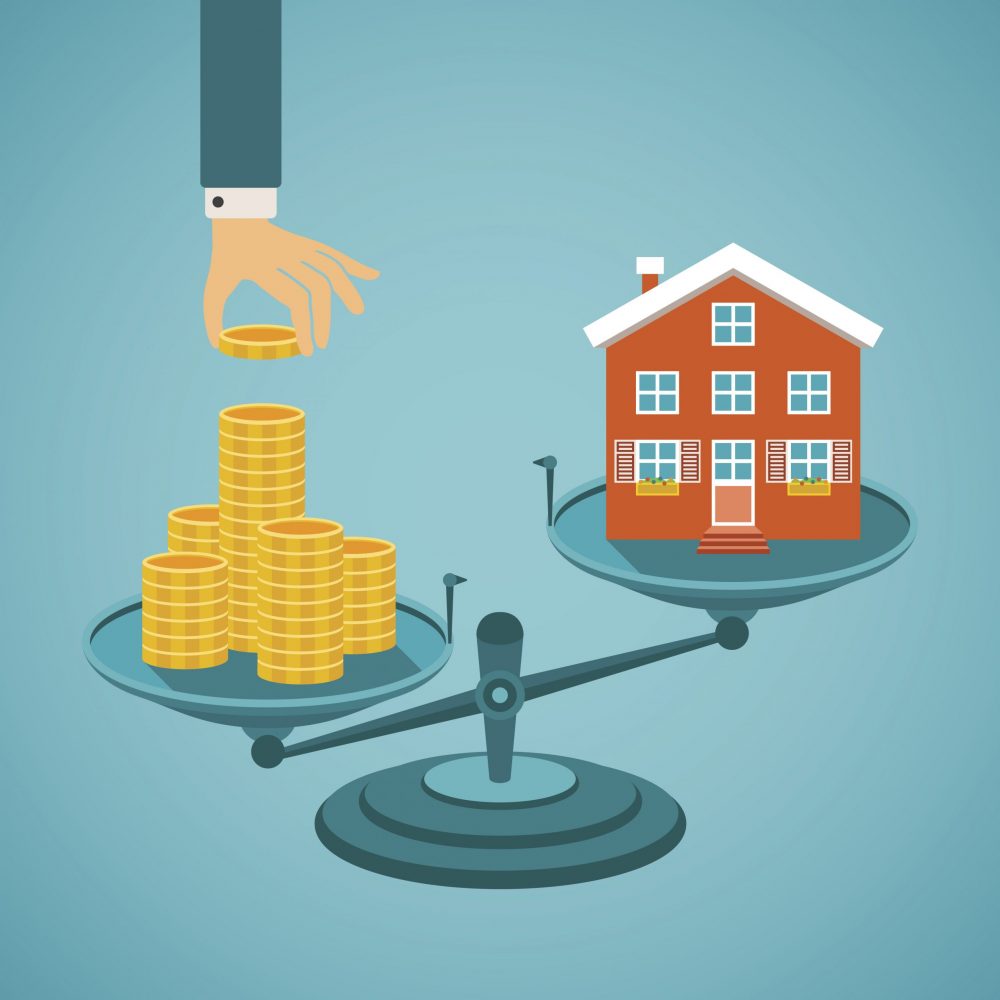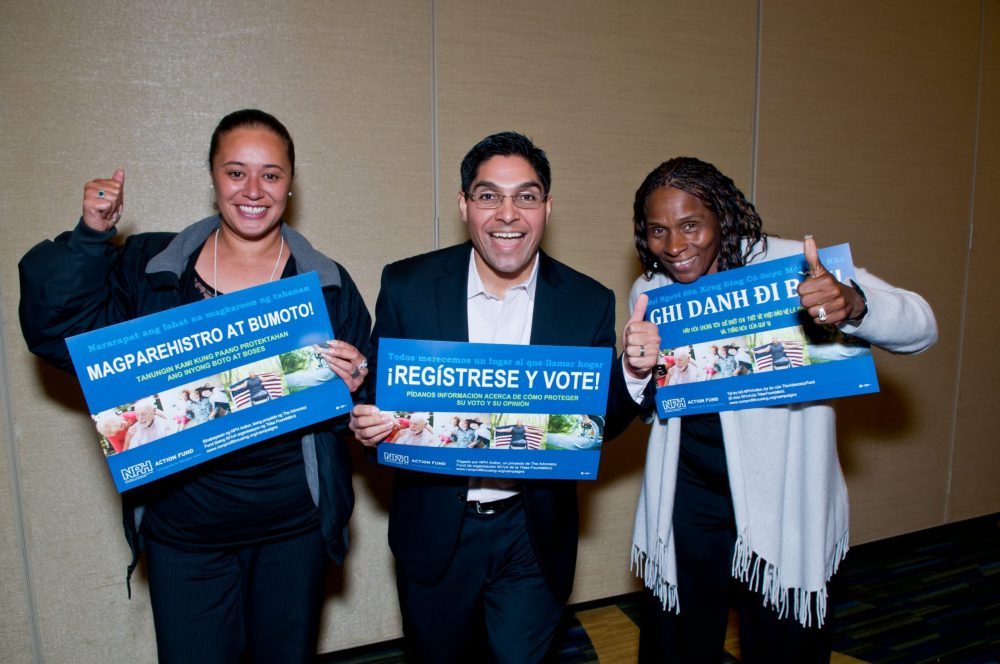
Image © iStockPhoto
Given how much time media outlets, policy shops, and community groups have spent talking about America’s affordable housing crisis over the last few years, you might think that we’ve at least settled on a pretty good way to define what housing affordability actually is. After all, how can we talk about solving a problem if we don’t have a reliable way of determining who’s suffering, where, and why?
Unfortunately, you’d be wrong.
As an illustration, picture yourself as an employee of a local supermarket, making $1,500 a month. You live with a friend in an outlying neighborhood, and your share of rent is $400, plus $300 a month for car expenses. After all that, you have $800 a month left over—which dwindles pretty quickly between child care, groceries, and prescriptions. When you get sick or your car breaks down, you can’t avoid racking up some credit card debt.
Across town, a man who works as a VP in marketing makes $8,000 a month. He pays $3,000 in rent for a brand-new loft apartment near downtown. Because he can walk to work and takes public transit most other places, he buys a monthly pass for $100 and doesn’t own a car. After those costs, he’s got $4,900 to spend every month, which buys lots of nice meals out and international vacations while leaving room for healthy retirement savings.
The marketing VP can make his payments easily while you’re having trouble paying your rent, but according to our most common standard of housing affordability, it’s the VP who’s rent-burdened.
That’s because those standards rely on a simple ratio: if you pay more than 30 percent of your income in housing costs, your housing is unaffordable. If you don’t, it’s not. The supermarket employee in our comparison pays just 27 percent ($400 of $1,500) of their income on housing, while the marketing VP pays 38 percent ($3,000 of $8,000).
The supermarket employee vs. VP story is an extreme example, but it demonstrates several of the fundamental problems with the 30 percent threshold as a measure of housing affordability.
- Equity. Most obviously, the 30 percent threshold doesn’t take into account that, depending on how much money you start with, leaving 70 percent of your income for all non-housing expenses may be plenty—or not nearly enough. Affluent people have the luxury of deciding whether to spend relatively large portions of their incomes to buy housing in a better location, or with particular amenities, without sacrificing other necessities like food or clothing. Low-income people generally don’t have that option. In that way, comparisons between people with different earnings can turn out misleading or unfair, as in the example above.
But it can also fail in analyzing the burden of housing costs on people with similar incomes. Not everyone, after all, has the same non-housing obligations: for a healthy, childless twenty-something, a salary of $40,000 might easily cover housing, food, insurance, and other necessities. But someone who has to do much more non-housing spending—because of a chronic medical condition, or children with special needs—might struggle on the same income.
- Other location-based costs. On top of that, there’s increasing recognition that housing choices are closely tied to other costs, which need to be considered. In other words, the cost of housing is less relevant than the total cost of a location. By far the most important of these “other costs” is transportation. While housing closer to the center of a metropolitan area is often more expensive, it also requires less driving—and often no driving at all, thanks to public transit—which saves a lot of money. According to Harvard’s Joint Center for Housing Studies, low-income people who manage to spend less than 30 percent of their income on housing actually end up paying $100 a month more on getting around, which eats into their savings, and sometimes erases them entirely.
Some organizations, like Chicago’s Center for Neighborhood Technology (CNT), have tried to take these factors into account. CNT’s H+T Index shows the total housing and transportation costs for various locations, set against a combined affordability standard of 45 percent of income. That’s a major step forward, but using a ratio like 45 percent still has all the other problems of the 30 percent ratio.
- Quality of housing. The 30 percent threshold can’t tell us anything about what a given household is getting for their money. Few of us would say that affordable housing needs are met by homes that are low in cost but lacking in basic modern amenities like heating or indoor plumbing. While those problems are now relatively rare in major metropolitan areas, many cities have a stock of affordable housing that is predominantly located in neighborhoods with high crime rates, failing schools, few options for fresh food, or other major quality of life issues. Does that housing satisfy our need for affordability?
This is an especially important question if we care about housing for its effects on opportunity and mobility. As recent research from Raj Chetty has reinforced, the kind of neighborhood you live in can dramatically change your prospects for living a comfortable middle-class life. It seems odd, in light of those findings, to measure housing access without taking into account whether that access includes communities that offer a shot at economic stability in addition to cheap rent.
The way we currently measure housing affordability is simply inadequate to the task. Why, then, do we use it? Well, primarily because it’s simple.
Improving on the Simple Ratio
What we really want to know, when we ask if housing is affordable, is whether a given person or family can buy themselves acceptable housing without sacrificing any other necessities, from decent food to work-appropriate clothing, child care, to retirement savings.
So what would a capability-based housing affordability measure look like? Fortunately, there’s already a good proposal. The “residual-income” approach, promoted most notably by University of Massachusetts-Boston professor Michael E. Stone, looks explicitly at non-housing costs and subtracts those from total income. What’s left over—the “residual”—is how much you can afford to spend on housing without sacrificing other necessary payments.
Unlike the 30 percent threshold, the residual-income approach actually measures your ability to pay. It acknowledges that different people have different spending needs, and that affluent people who choose to buy expensive housing are indulging in a luxury, not suffering from an affordability crisis.
Using a 30 percent ratio of housing costs to income isn’t going to give us a good idea of who is really burdened by unaffordable housing and who isn’t. For both renters and homeowners, we need something new.
In addition to addressing equity concerns, the residual-income approach could automatically adjust for other location-based costs if applied in a nuanced enough way. If choosing to buy a home in a particular place typically means that transportation costs go up by $300 a month, then the residual-income method could require that there be an extra $300 available outside of housing costs in order for that home to be “affordable.”
It’s less clear how to incorporate housing quality. You might say that anyone whose housing location doesn’t give them access to decent public schools—and who can’t afford to send their children to private schools—doesn’t have access to affordable housing of acceptable quality. But what cutoffs do we use? What else counts toward “acceptable housing quality”? How to integrate those concerns into the housing affordability conversation is a difficult question.
Another issue is that residual income is a bit harder to calculate than the 30 percent threshold since it requires knowing much more about a given household than just its total income. [Editor’s Note: It also requires coming to a consensus about what constitutes “enough” in terms of non-housing costs. Click here to see some different approaches.] But it’s far from impossible, and is already being employed at scale by the Department of Veterans Affairs, which uses a version of the residual-income approach to qualify veterans for mortgages.
Stone has also worked out how the national affordable housing landscape changes if you use residual income, rather than income ratios, as your yardstick. It turns out that the number of people suffering from unaffordable housing stays roughly the same—it’s just that they’re different people. As in our example above, measuring via residual income shows that we have far less of a problem for wealthier, smaller households, and far more of a problem for poorer, larger households.
And when it comes to deciding who to target with affordable housing policies—and how much help they need— who actually has the most need can make a big difference. As affordable housing becomes one of the defining issues for many of our largest, most economically successful cities, making sure we understand what “affordable” really means is crucial. The 30 percent standard, though sometimes useful as a rule of thumb, is too blunt to be our main tool. It makes sense to shift to an approach that measures whether people can afford the makings of a stable life in America, which requires going beyond a simple cost-income ratio. The residual-income metric is a good candidate.
What About Ownership?
That situation is more complicated when trying to grasp what “affordability” means to someone who owns their own home. The biggest issue is that unlike rent, your mortgage payments are really buying two products: a place to live, and an investment vehicle. For the vast majority of homeowners, a home is a wealth-building engine that they hope will appreciate in value so that it can be sold at a profit one day.
Housing wealth makes up close to half of the total American household wealth, and can help pay for college tuition, retirement, and other important life events. In other words, it’s very important—but it’s not exactly as necessary as having a roof over your head. As a result, it doesn’t really make sense to include home-as-investment-vehicle in basic measures of affordability. At the very least, it may make sense to discount the potential profit a homeowner can expect to earn from their investment against their mortgage payments.
But there are several complications to doing that. For one, we can’t necessarily know how much a home is going to appreciate in value, or whether it will appreciate at all. On top of that, the profit that a homeowner enjoys comes at a different time than their house payments—in other words, they have a cash flow problem. Imagine a retiree on a fixed income whose home value increases dramatically. They are now much wealthier on paper, but may not be able to actually make their property tax payments because they can only access that wealth by selling their home (or taking out a home equity loan).
On the other hand, because homeowners expect this payoff—and because many homeowners expect to live in their homes for many years—a buyer may decide to spend more money on their home than they would be willing to spend on rent. Buyers may also take into account that their incomes are likely to rise over the time they are living in their home.
In practice, it still makes sense to use the same residual-income method to measure owner-occupied housing affordability. But when it comes to looking at particular policies, taking into account the dual shelter/investment nature of homeownership is important. For example, homeowners in neighborhoods where housing values are rapidly appreciating may find that their property tax bills are higher than they anticipated when they bought—and higher than their income allows them to pay without making unreasonable sacrifices. While some advocates have suggested property tax forgiveness in these cases, property tax delay may actually make more sense.
After all, a homeowner’s rising tax bill is a sign that they are becoming wealthier—just in a way that doesn’t change their immediate cash flow. Rather than giving a tax break to someone experiencing a windfall, and denying local governments revenue for essential services, it may be better to simply collect them if and when the homeowner actually sells their home and experiences the gains from their investment.
Either for owners or renters, using a 30 percent ratio of housing costs to income isn’t going to give us a good idea of who is really burdened by unaffordable housing. We need something new. The residual-income approach does a much better job of indicating when a given household is capable of paying both for housing and the other necessities of a modern American life. It deserves a more prominent role in our ongoing affordability debates.
This article was originally published on City Observatory as a three-part series.





WOW! I didn’t realize that so many middle class writers don’t know about EITC, CTC, SNAP (aka food stamps), and Medicaid. These government benefits make a big difference in both the 30% of income and residual income calculations, but are generally ignored. Payroll taxes are also ignored.
Your supermarket employee who earns $1,500 per month receives a federal Earned Income Tax Credit of about $3,373 for the year if they have one child (more if they have two or more). They can file a Form W-4 with their employer and receive an extra $281 (or more) each month on their paycheck. They also receive a federal Child Tax Credit of $1,000 for the year, which they can also receive with their paychecks. The benefit calculations for SNAP are more complicated, but they can receive between $50 and $100 per month in food assistance. These benefits, which are basically automatic, increase the supermarket employee’s “residual income” by more than 50% and reduces their percentage of income paid for housing to 20.9% or less.
While $18,000 is over the federal poverty limit, it is low enough in many states to receive free healthcare through the Medicaid program. Unfortunately, the supermarket employee will also pay $1,377 in Social Security taxes and $61 in federal income taxes, which will reduce their residual income.
We can’t get “a good picture of who is really burdened by housing cost” unless we consider government benefits and payroll taxes as well.